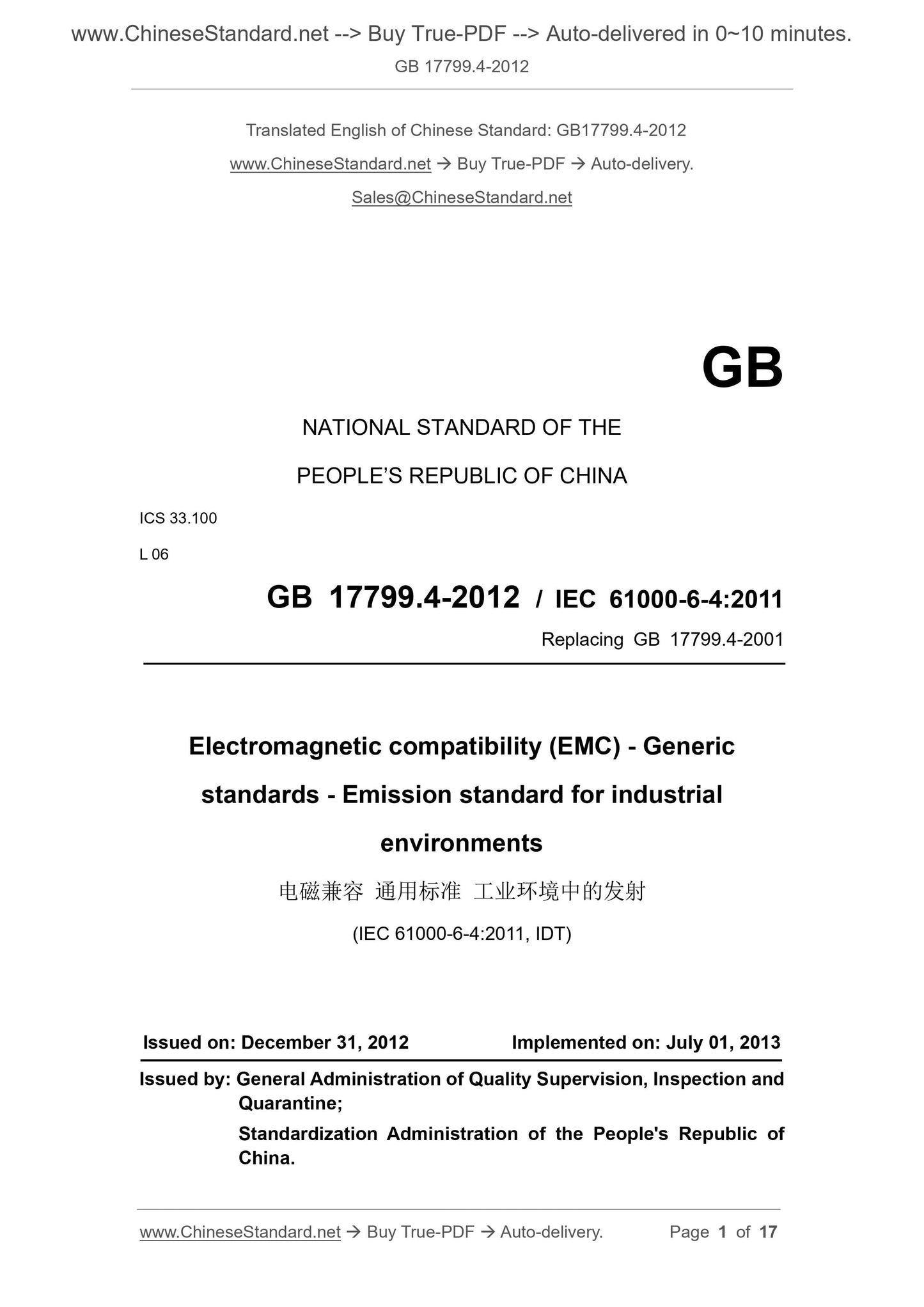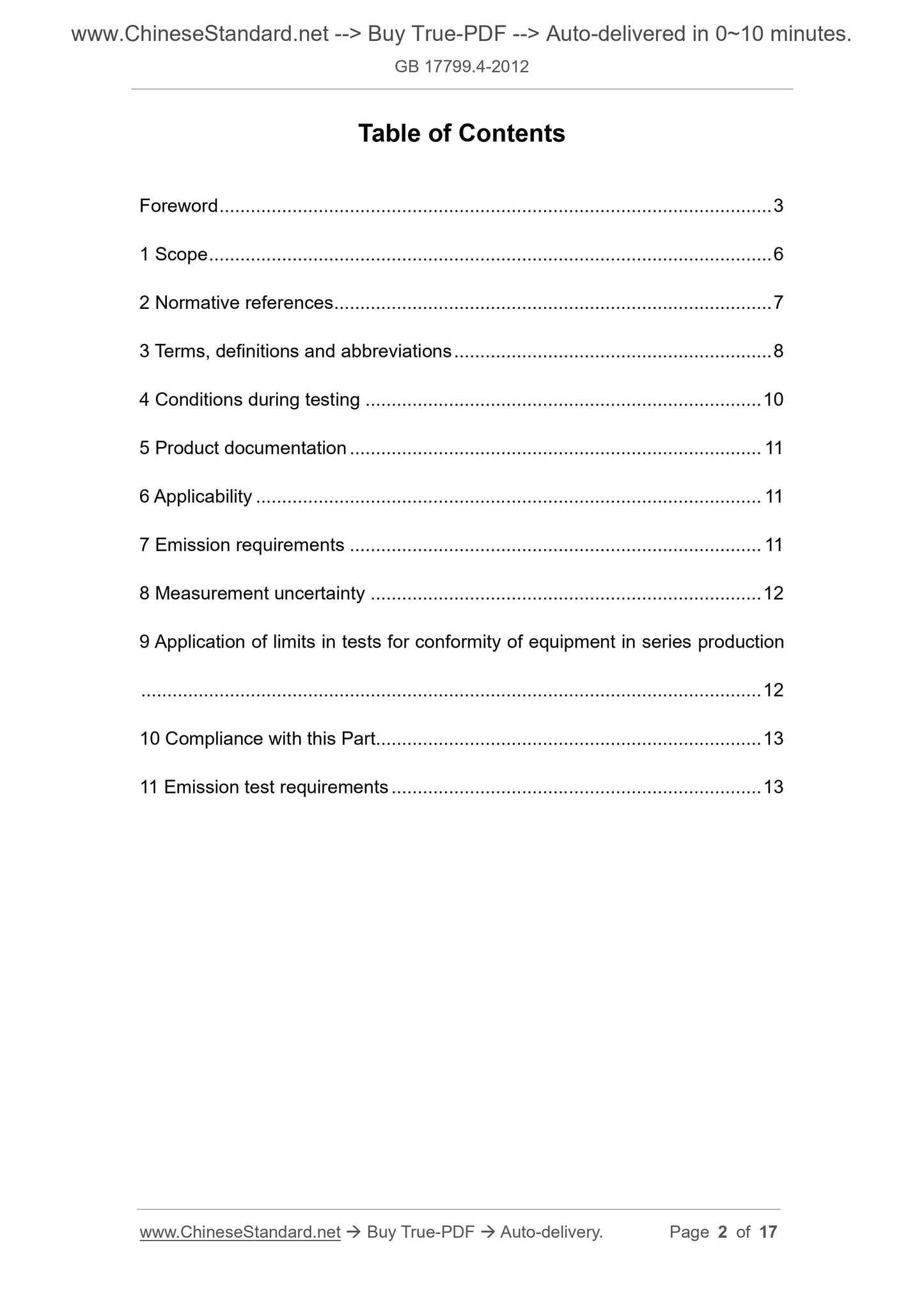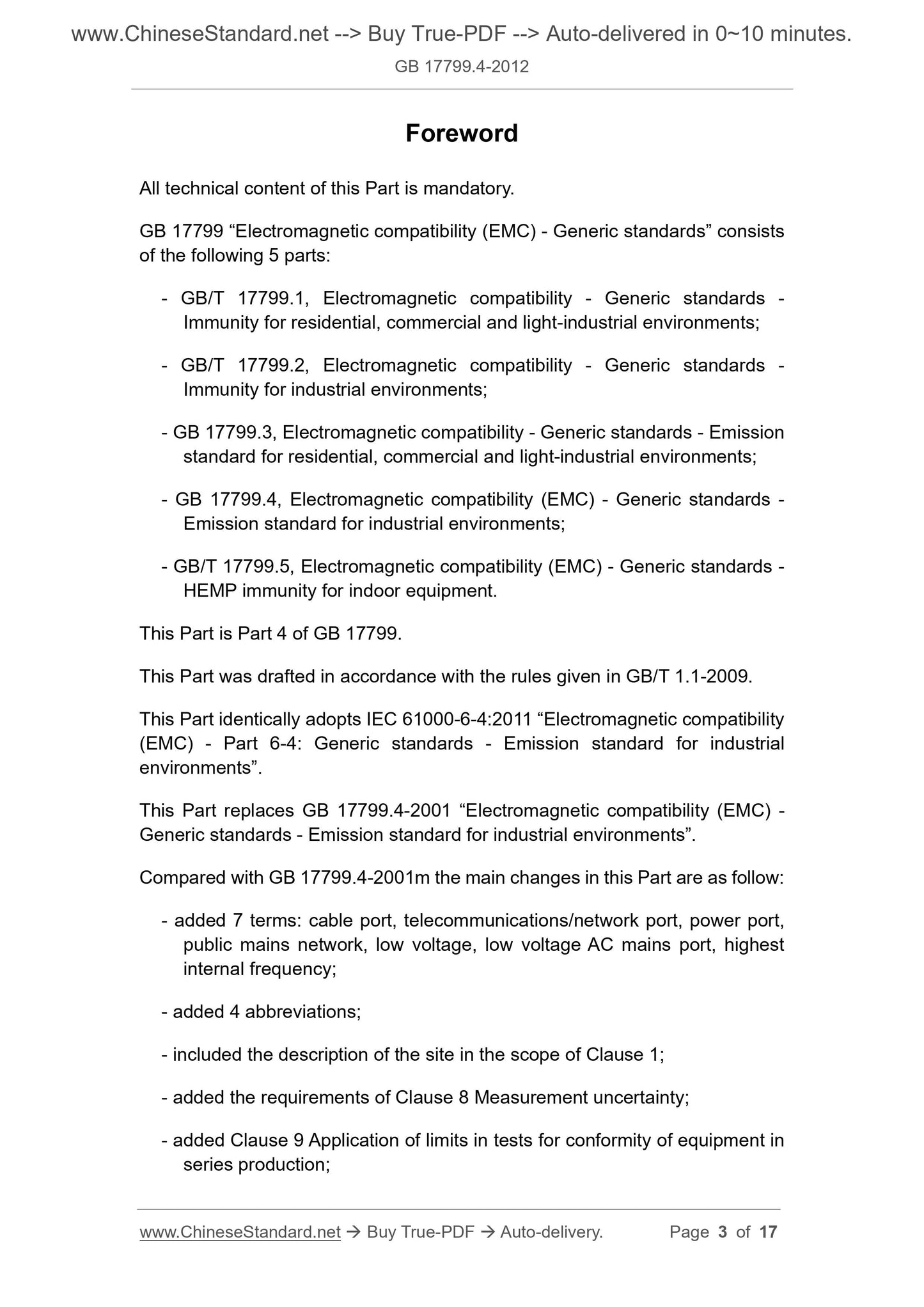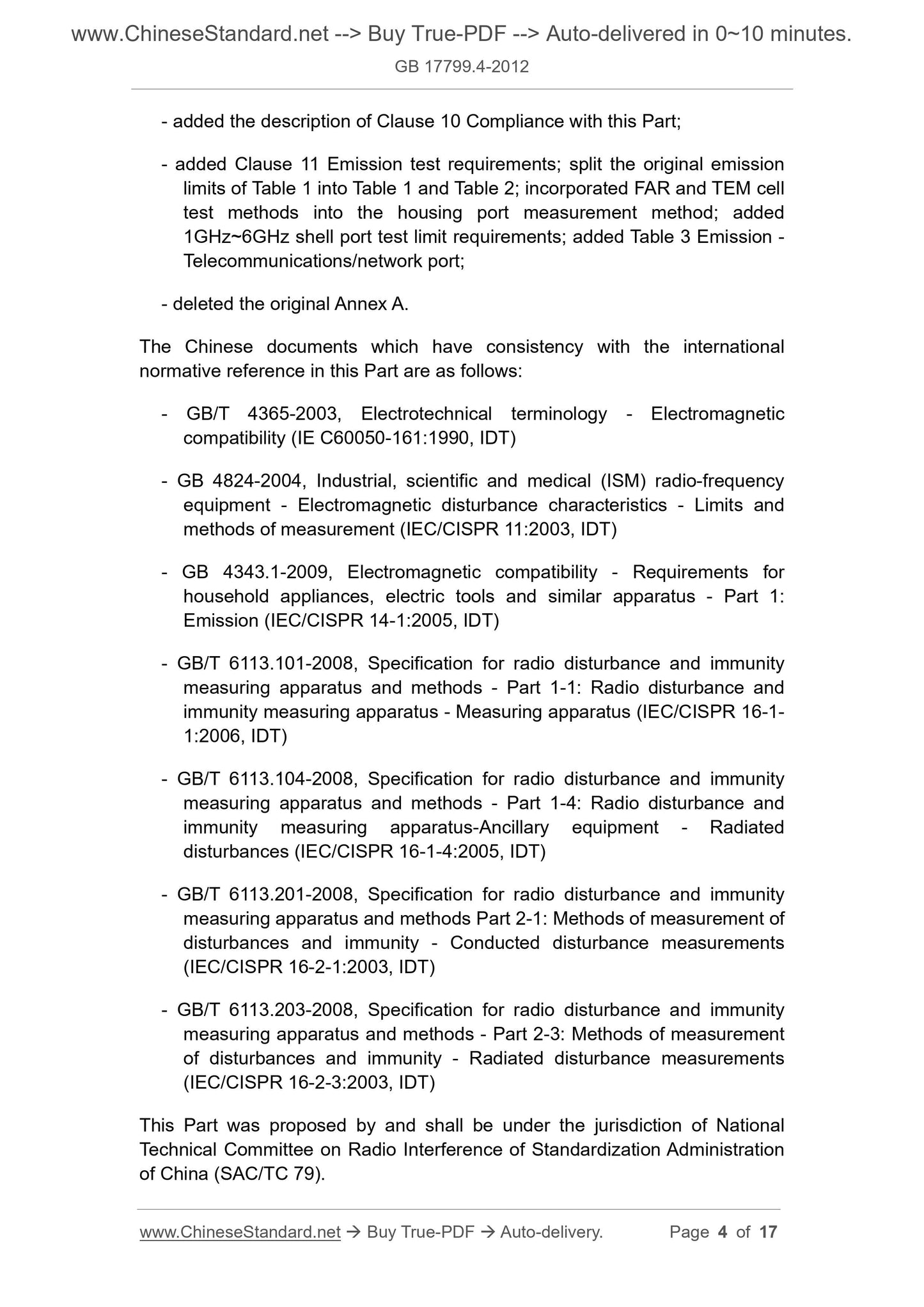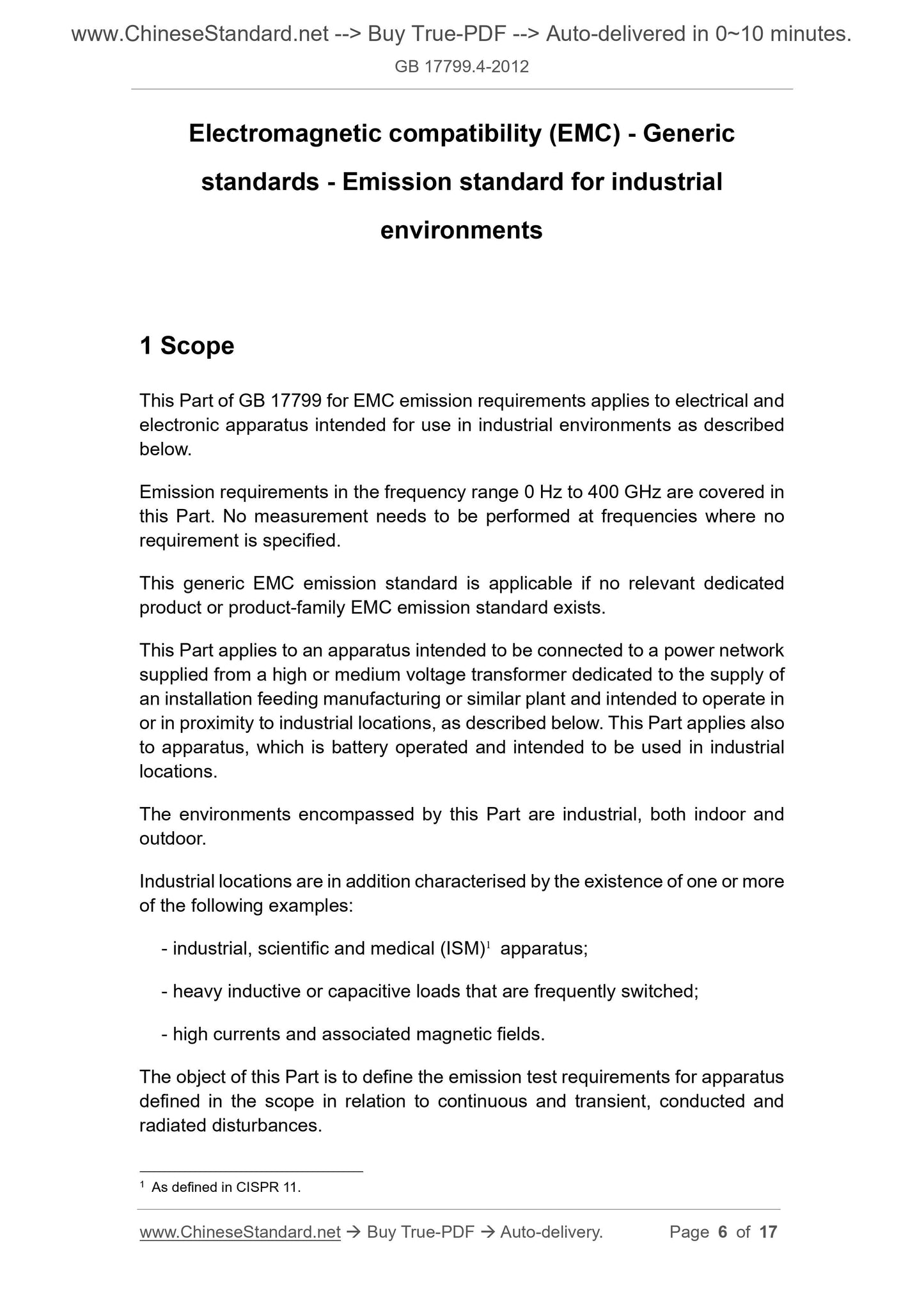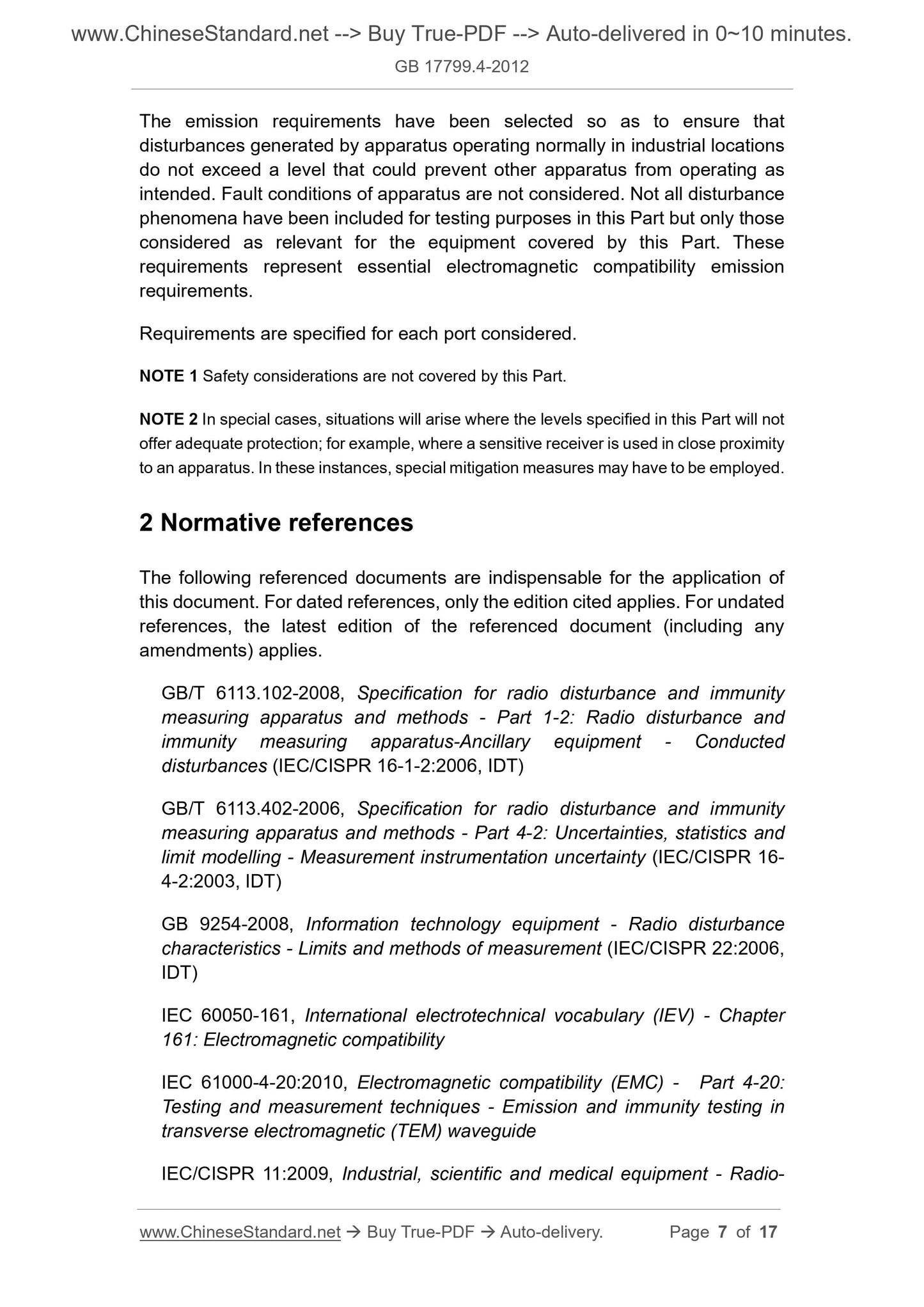1
/
of
6
PayPal, credit cards. Download editable-PDF and invoice in 1 second!
GB 17799.4-2012 English PDF
GB 17799.4-2012 English PDF
Regular price
$210.00
Regular price
Sale price
$210.00
Unit price
/
per
Shipping calculated at checkout.
Couldn't load pickup availability
GB 17799.4-2012: Electromagnetic compatibility (EMC) -- Generic standards -- Emission standard for industrial environments
Delivery: 9 seconds. Download (and Email) true-PDF + Invoice.Get Quotation: Click GB 17799.4-2012 (Self-service in 1-minute)
Newer / historical versions: GB 17799.4-2012
Preview True-PDF
Scope
Provisions of this Part of GB 17799 of emission requirements for electrical and electronic equipment used in the following industrial environments.This section applies to the frequency range of 0Hz ~ 400GHz. Standard band unspecified without measure.
If no relevant products or product categories electromagnetic compatibility (EMC) emission standard, then this part of the common EMC emission standard is applicable.
This section applies to devices connected to the power grid of high-voltage or medium-voltage transformer power supply, only for those transformer factory or similar facility
Power supply facilities. This section also applies to battery-powered equipment to be used in an industrial environment.
Environment described in this section including industrial sites indoor and outdoor environments.
Characteristics of industrial sites that have one or more of the following conditions.
--- Industrial, scientific and medical (ISM1)) equipment;
--- Frequent switching large inductive or capacitive loads;
--- Large current and accompanied by a strong magnetic field.
The purpose of this section is applicable to apparatus within the scope of the provisions of its electromagnetic emission limits and measurement methods, electromagnetic emission of these devices can
Can interfere with other devices, consider phenomena involving continuous and transient, conducted and radiated disturbances.
These emission limits through the choice of the representative of basic electromagnetic compatibility requirements, and can ensure the normal operation of the industrial establishments in the
Level of disturbance generated does not interfere with other devices work properly. Irrespective of fault status of the device. For testing purposes, in this section,
It does not contain all of the harassment, but only considered in this section cover the related equipment.
The section for each port considered all the provisions of the test requirements.
Note 1.This section is no security requirements.
Note 2.In special cases, the limits specified in this section does not provide adequate protection, for example, the use of sensitive equipment in the vicinity of the receiving device. In these cases
Next, you may need to take additional measures for improvement.
Basic Data
| Standard ID | GB 17799.4-2012 (GB17799.4-2012) |
| Description (Translated English) | Electromagnetic compatibility (EMC) -- Generic standards -- Emission standard for industrial environments |
| Sector / Industry | National Standard |
| Classification of Chinese Standard | L06 |
| Classification of International Standard | 33.100 |
| Word Count Estimation | 13,194 |
| Older Standard (superseded by this standard) | GB 17799.4-2001 |
| Quoted Standard | GB/T 6113.102-2008; GB/T 6113.402-2006; GB 9254-2008; IEC 61000-4-20-2010; IEC/CISPR 11-2009; IEC/CISPR 14-1-2005 + A1-2008; IEC/CISPR 16-1-1-2010; IEC/CISPR 16-1-4-2007 + A1-2007; IEC/CISPR 16-2-1-2008; IEC/CISPR 16-2-3-2006 |
| Adopted Standard | IEC 61000-6-4-2011, IDT |
| Regulation (derived from) | National Standards Bulletin No. 41 of 2012 |
| Issuing agency(ies) | General Administration of Quality Supervision, Inspection and Quarantine of the People's Republic of China, Standardization Administration of the People's Republic of China |
| Summary | This Chinese standard specifies emission requirements for use in the following industrial environment electrical and electronic equipment. This standard applies to the frequency range of 0 Hz ~ 400 GHz. Standard does not specify the frequency bands to be |
Share
